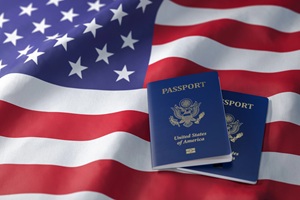
Can You Convert Your H-4 To An H-1B Visa While In The U.S.?
Winning in the immigration journey can feel as thrilling as hitting a jackpot. For H-4 Visa holders, the possibility of transitioning to an H-1B Visa unlocks professional opportunities and a new chapter in the U.S. workforce. It’s a move that allows individuals to pursue their careers and provides the legal right to work in the United States.
This guide unpacks everything you need about converting an H-4 to an H-1B Visa. By the end, you’ll understand how to confidently navigate the process and how Dallas Immigration Lawyers can support your transition.

Understanding H-4 & H-1B Visas
Understanding the purpose and limitations of H-4 and H-1B Visas is the first step to determining your path forward. Each Visa serves distinct roles in the immigration system, and their differences shape your options for conversion.
H-4 Visa Basics
The H-4 Visa exists to unite families of H-1B holders, allowing spouses and dependents to live in the U.S. For many H-4 holders, the inability to work legally creates challenges in pursuing personal goals or supporting their families.
However, an Employment Authorization Document (EAD) offers a rare exception, enabling some H-4 holders to work. Still, this option is limited and often insufficient for individuals seeking long-term career growth.
H-1B Visa Highlights
The H-1B Visa flips the script by prioritizing professional opportunities. Designed for skilled workers, it supports employment in specialized fields like IT, engineering, healthcare, and more. This Visa offers freedom, not just for career advancement but also for contributing to the U.S. economy.
The contrast between the H-4 and H-1B is stark. While one restricts employment, the other opens doors to professional fulfillment. Now that the two Visa types are clear, the next step is determining whether you meet the requirements for this transition.
Eligibility Criteria For H-4 To H-1B Conversion
Converting from an H-4 Visa to an H-1B Visa is like stepping into a new pair of shoes—it must fit perfectly. Eligibility criteria ensure that the transition aligns with U.S. immigration laws and serves both the applicant and the sponsoring employer.
To qualify, you must meet several requirements:
Educational Qualifications. A bachelor’s degree or equivalent in a specialized field is necessary.
Specialty Occupation Offer. The offered job must require theoretical and practical expertise in your field.
Employer Sponsorship. A U.S.-based employer must sponsor your H-1B application and prove that the role can’t easily be filled locally.
These criteria reflect the H-1B’s goal of fostering skilled labor that addresses workforce gaps.
Employers play a pivotal role in this process. They are responsible for submitting accurate petitions and providing evidence of your eligibility. An experienced employer often distinguishes between a smooth application and one fraught with delays.
With your eligibility in check, you can now move on to the mechanics of the conversion process itself.
The Step-By-Step Conversion Process
Switching from an H-4 to an H-1B Visa is like assembling a jigsaw puzzle—each piece must fit perfectly. While the process may seem intricate, breaking it into manageable steps simplifies the journey.
- Step 1: Securing A Job Offer
Your first step is finding a U.S. employer willing to sponsor your H-1B Visa. This job must align with your qualifications and meet the criteria for a specialty occupation. Building a compelling resume and showcasing your unique skills can give you an edge. - Step 2: Filing A Labor Condition Application (LCA)
The sponsoring employer submits an LCA to the Department of Labor. This document certifies that your employment meets wage and workplace standards. Think of it as the employer’s promise to adhere to fair practices. - Step 3: Submitting Form I-129
Next, your employer files Form I-129, Petition for a Nonimmigrant Worker, with U.S. Citizenship and Immigration Services (USCIS). This petition must detail your qualifications, job responsibilities, and the employer’s intent to hire you. Accuracy and thoroughness are key. - Step 4: Change Of Status Approval
Once the petition is approved, your H-4 status officially changes to H-1B. For cap-subject applicants, staying within the annual limit is essential, as is filing during the designated period.
Completing these steps requires careful coordination between you and your employer. Understanding the steps is crucial, but so is anticipating challenges that could arise along the way.
Potential Challenges & How To Overcome Them
No journey is without bumps in the road. Converting from an H-4 to an H-1B Visa comes with its own set of challenges, but preparation is the antidote to uncertainty.
Common obstacles during the process:
- H-1B Cap Limitations: With only 85,000 Visas available annually, the odds depend on timing and the lottery process.
- Processing Delays: USCIS processing times can vary, causing anxiety and disruptions. Premium processing, though costly, can expedite decisions.
- Incomplete Documentation: Even minor errors in your application can result in significant delays or outright denial.
Anticipating these issues is half the battle. For the cap, ensuring timely submission improves your chances. For delays, premium processing may be worth considering if time is critical. For documentation, meticulous review and consultation can save time and effort.
Facing these obstacles head-on ensures your journey doesn’t get derailed. A well-prepared applicant is often a successful one. Legal guidance can make all the difference in turning challenges into manageable tasks.
How Dallas Immigration Lawyers Can Help You Transition

Immigration processes often feel overwhelming, but you don’t have to face them alone. Dallas Immigration Lawyers offer invaluable support for H-4 to H-1B transitions.
With years of experience in Visa applications, our firm provides clear, actionable advice. Our services focus on making the process seamless and working diligently to help you achieve your goals.
When you choose Dallas Immigration Lawyers, you gain more than legal representation—you gain peace of mind. Our personalized approach ensures your case receives the attention it deserves. Don’t let the process hold you back from pursuing your dreams. Contact us today and take the first step toward your transition.
Converting an H-4 to an H-1B Visa is an exciting opportunity for professional growth. The process involves meeting eligibility requirements, completing detailed steps, and navigating challenges like application caps and delays. With proper preparation, the transition becomes manageable and rewarding.
Dallas Immigration Lawyers are here to simplify this journey. Our comprehensive support ensures your application is thorough and timely, increasing the likelihood of approval.
Share this article
Table Of Contents
Latest articles
Categories




